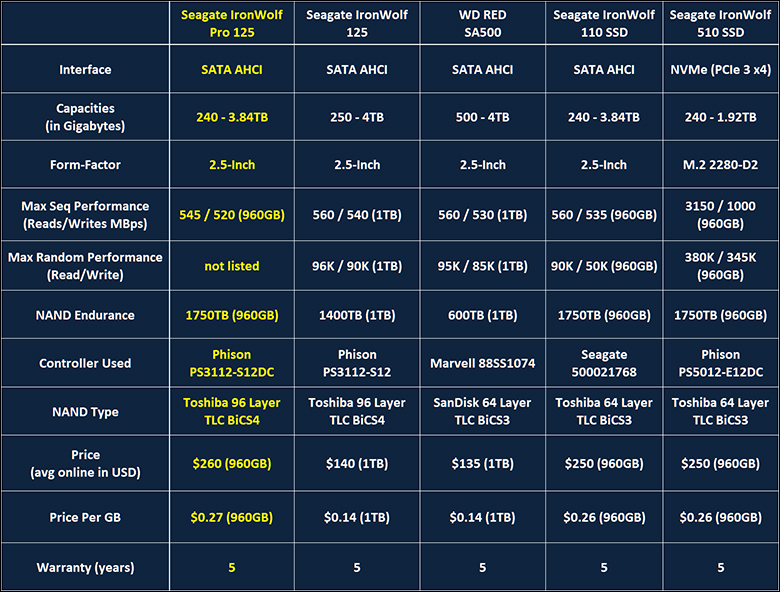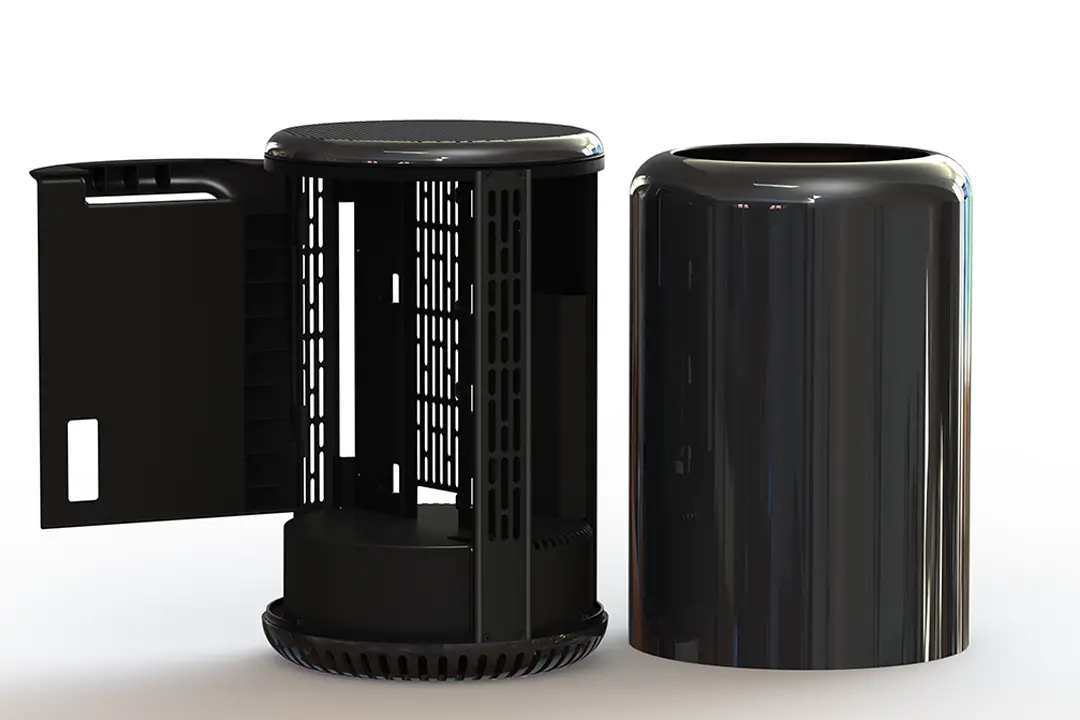Over the past few years owning some form of a Network Attached Storage device has gone from something that few outside of businesses even thought about to a serious corner of the consumer market. This makes sense as having an off-computer backup of your data is smart and cheap insurance for when Mister Murphy strikes… and yet only an air-headed celeb would trust ‘the cloud’ with anything more important than pictures of their cats. As this newer market grows and gains in popularity, so too does the idea of a NAS boosting performance gain ground. This was a big reason why in 2019 Seagate released a SATA SSD series orientated towards performance boosting NAS caching – the IronWolf 110. This year they have taken a different approach and released two models targeted at slightly different consumer demographics: the IronWolf 125, and the IronWolf Pro 125. Today we will be looking at the $140 1TB (IronWolf 125) and $260 960GB (IronWolf Pro 125) capacity versions.

In many ways, the IronWolf Pro 125 series can be considered the direct replacement for the IronWolf 110. Much like the ‘Wolf 110, the IronWolf Pro 125 was designed and built with the Small/Medium Business, and prosumer, NAS user in mind… and comes with an asking price that reflects this ‘serious business’ focus. To help justify its asking price Seagate has included features that the typical home consumer may not care about, but anyone serious about NAS will. This includes using an enterprise grade controller (Phison S12DC) with firmware that prioritizes long term performance consistency over short-term benchmark performance; on-board capacitors for total data security; and hardware level over-provisioning to go along with the ‘floating’ over-provisioning that Seagate’s DuraWrite brings to the table. This is why the paper performance ratings are lower for it than the standard model… as Seagate is guaranteeing a minimum performance level, not the typical ‘up to’ specifications most SSD’s come with. It is also why the IronWolf Pro 125 series comes with a rather generous 1 full drive write per day, five-year warranty.
Make no mistake, the ‘standard’ IronWolf 125 series is not a toy. It too has been built to a rather high standard. It just is targeted more towards the home consumer rather the business marketplace. In this corner of the market NAS appliances and not NAS servers reign supreme. As such, different design priorities are needed to satisfy this targeted buyer’s needs. For example, the typical home user environment is not going to constantly slam their NAS’ storage array and as such the SSD controller has time to ‘recover’ from short-term, high I/O burst, demands placed upon it. Thus, short term performance is more important than constant, heavy I/O performance. Here capacity is also more important than durability… as the NAND is simply not going to be killed by constant writes like it would in a business environment. Lastly, ‘Price is King’ as this may indeed be the first time a buyer has even thought about either adding a solid-state cache drive to their shiny new (and possibly first) NAS device, or creating a storage pool made up solely of Solid State.
If nothing else, this splitting of their single NAS orientated SATA SSD IronWolf model into two more focused models certainly underscores how serious Seagate is starting to take non-enterprise network storage caching. With the ‘ten-thousand-foot view’ taken care of let’s zoom in on each model and see what each actually bring to the table. Then and only then will you know which model has been optimized for your particular needs.











